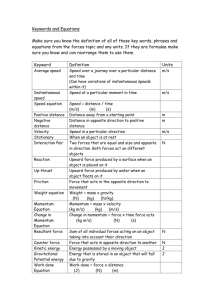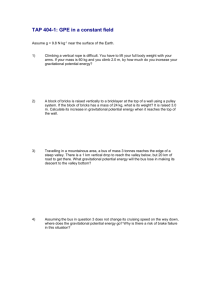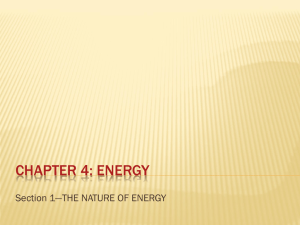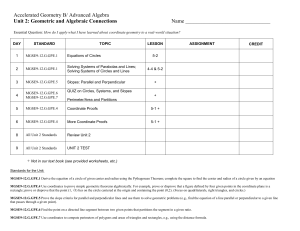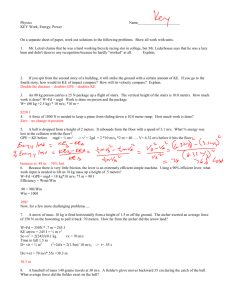answers - Ms. Westendorf's Physical Science
advertisement
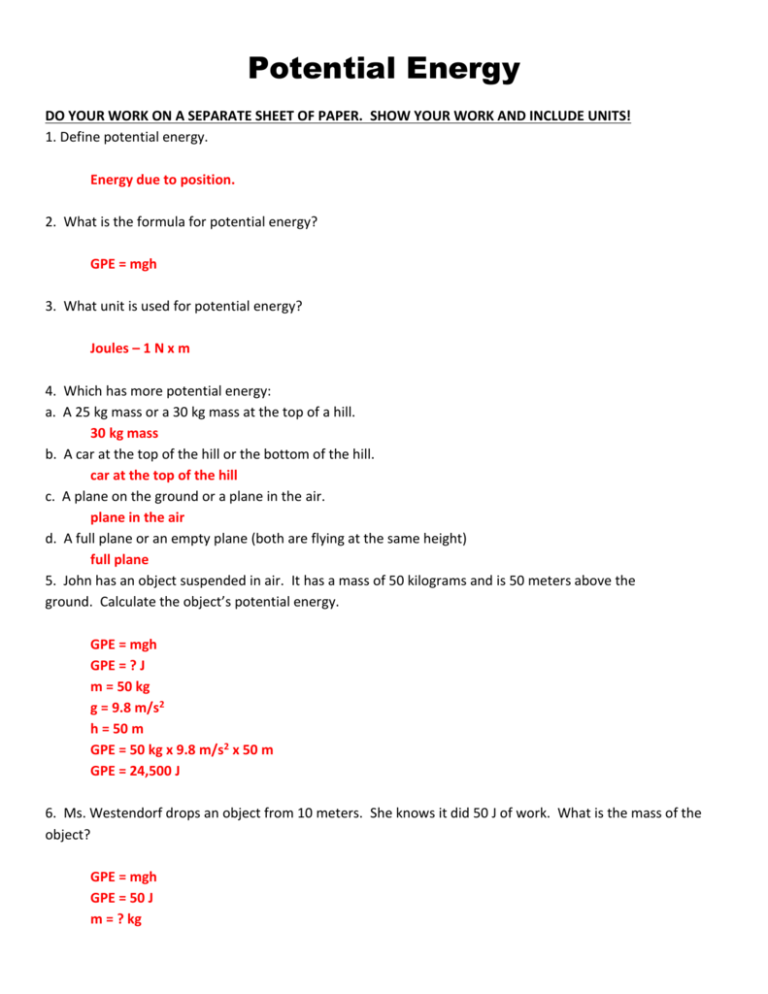
Potential Energy DO YOUR WORK ON A SEPARATE SHEET OF PAPER. SHOW YOUR WORK AND INCLUDE UNITS! 1. Define potential energy. Energy due to position. 2. What is the formula for potential energy? GPE = mgh 3. What unit is used for potential energy? Joules – 1 N x m 4. Which has more potential energy: a. A 25 kg mass or a 30 kg mass at the top of a hill. 30 kg mass b. A car at the top of the hill or the bottom of the hill. car at the top of the hill c. A plane on the ground or a plane in the air. plane in the air d. A full plane or an empty plane (both are flying at the same height) full plane 5. John has an object suspended in air. It has a mass of 50 kilograms and is 50 meters above the ground. Calculate the object’s potential energy. GPE = mgh GPE = ? J m = 50 kg g = 9.8 m/s2 h = 50 m GPE = 50 kg x 9.8 m/s2 x 50 m GPE = 24,500 J 6. Ms. Westendorf drops an object from 10 meters. She knows it did 50 J of work. What is the mass of the object? GPE = mgh GPE = 50 J m = ? kg g = 9.8 m/s2 h = 10 m 50 J = m x 9.8 m/s2 x 10 m 50 J = m x 98 m = 0.51 kg 7. Brian has an object suspended in air. It has a mass of 100kg and is 25 meters off the ground. What is the object’s potential energy? GPE = mgh GPE = ? J m = 100 kg g = 9.8 m/s2 h = 25 m GPE = 100 kg x 9.8 m/s2 x 25 m GPE = 24,500 J 8. The mass of a rock is 1220 kg. It had 400 J of potential energy before it rolled down a hill. Calculate the height of the hill. GPE = mgh GPE = 400 J m = 1220 kg g = 9.8 m/s2 h=?m 400 J = 1220 kg x 9.8 m/s2 x h 400 J = 11,956 x h h = 0.033 m

